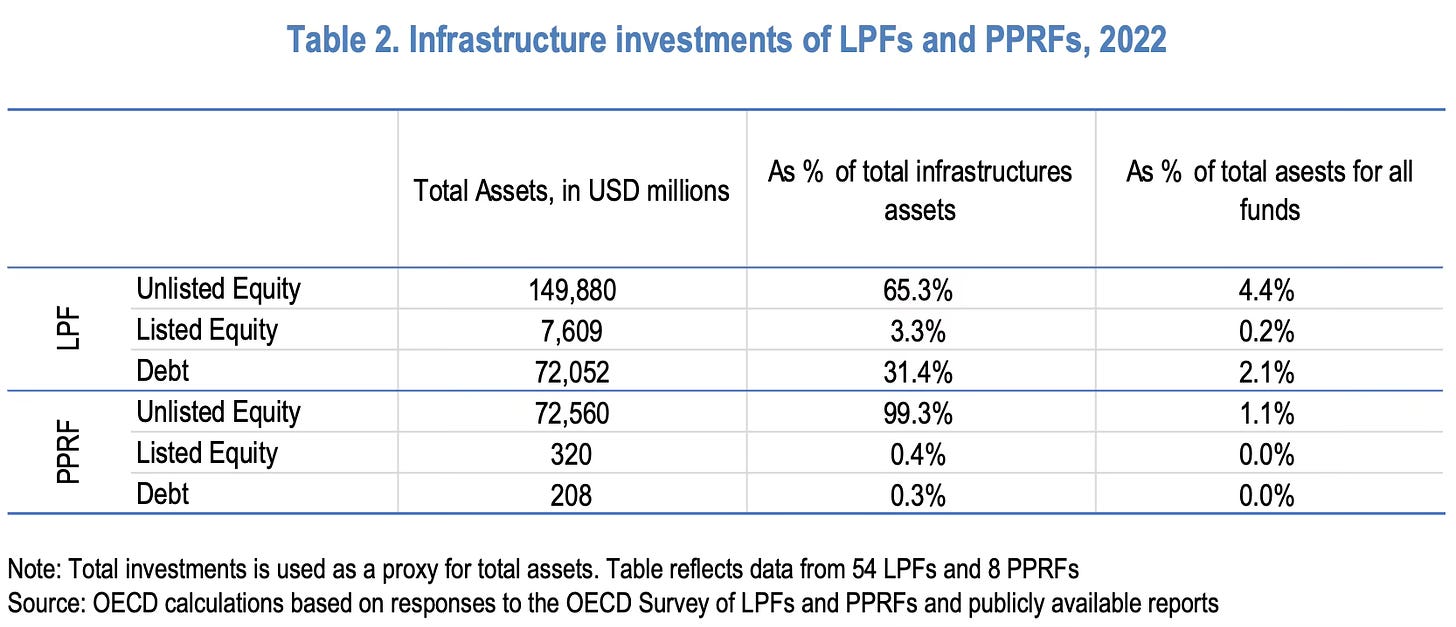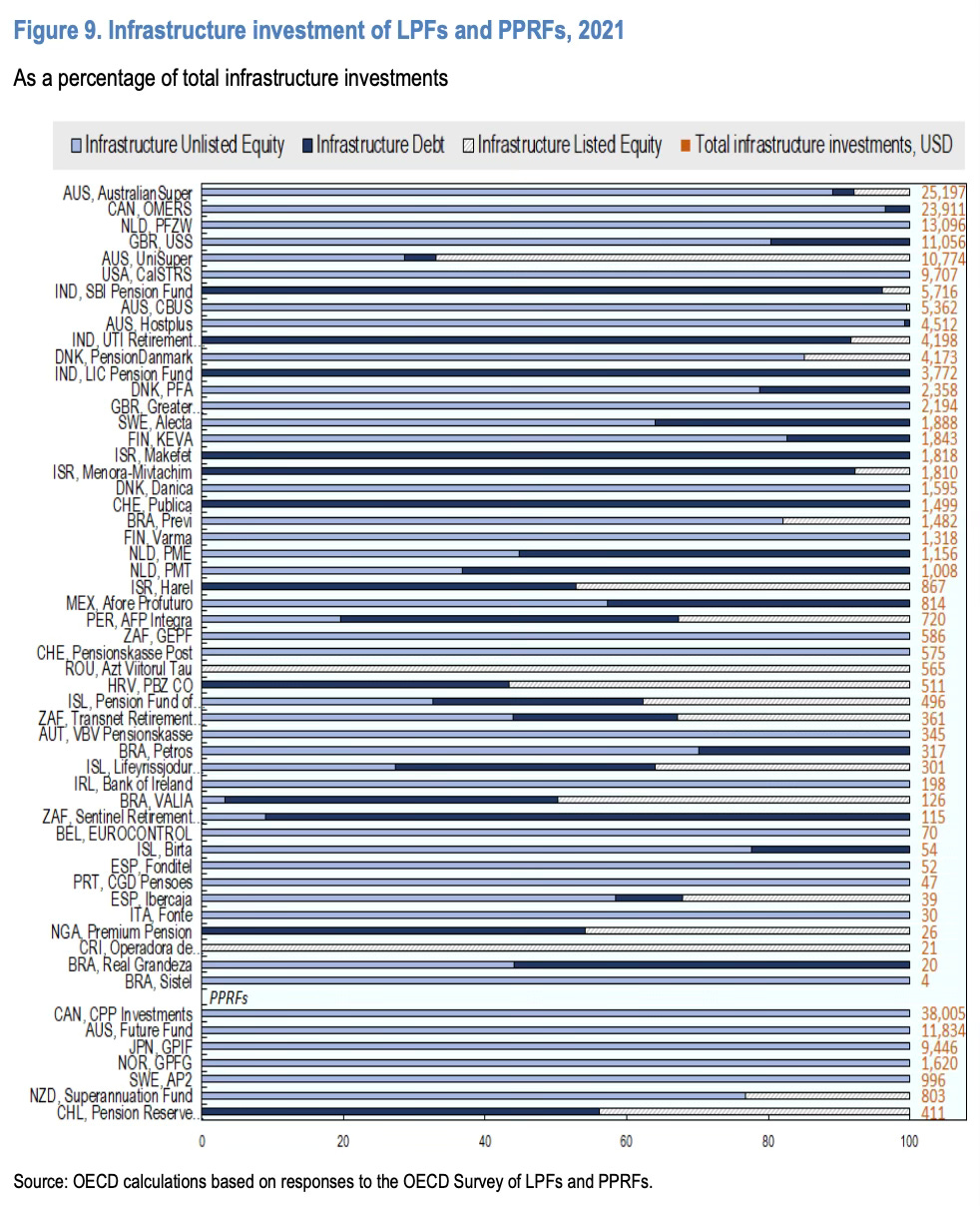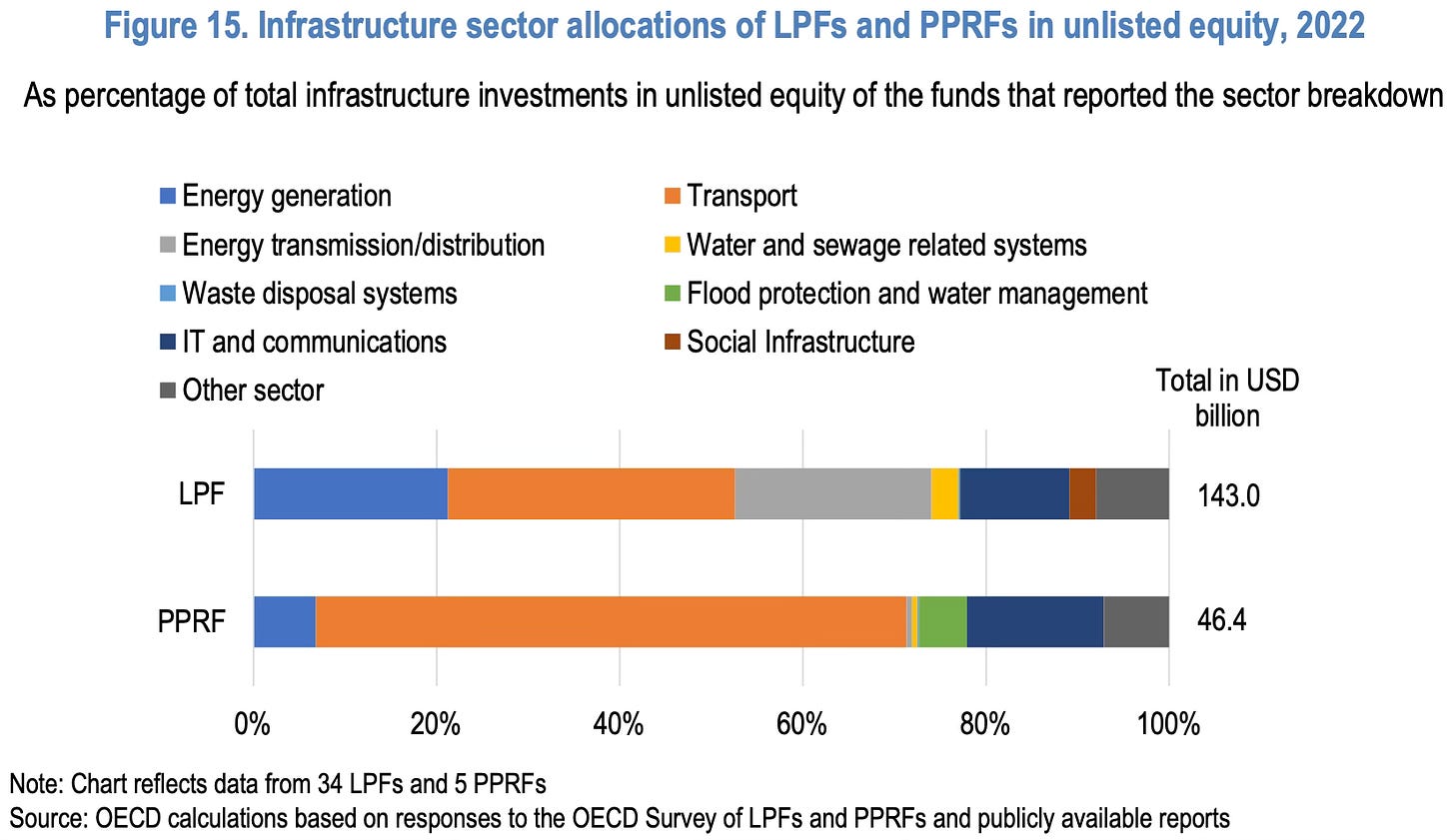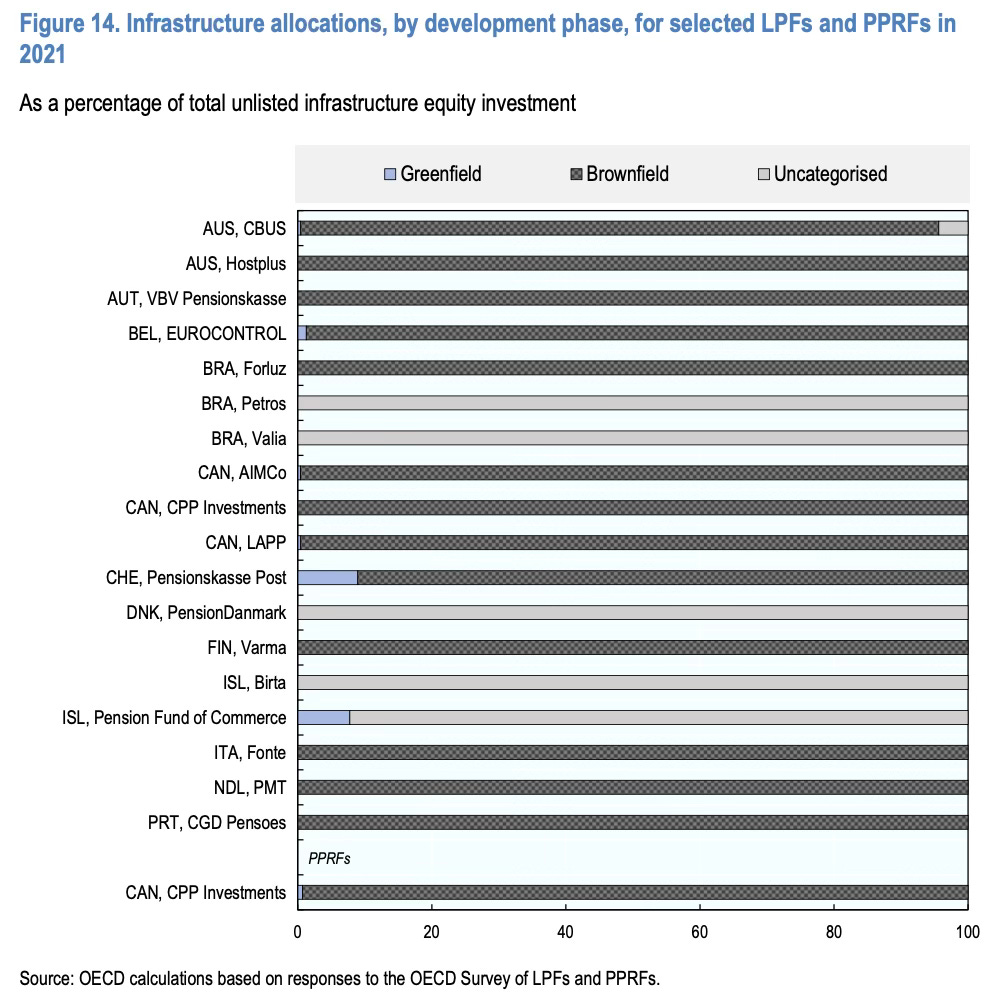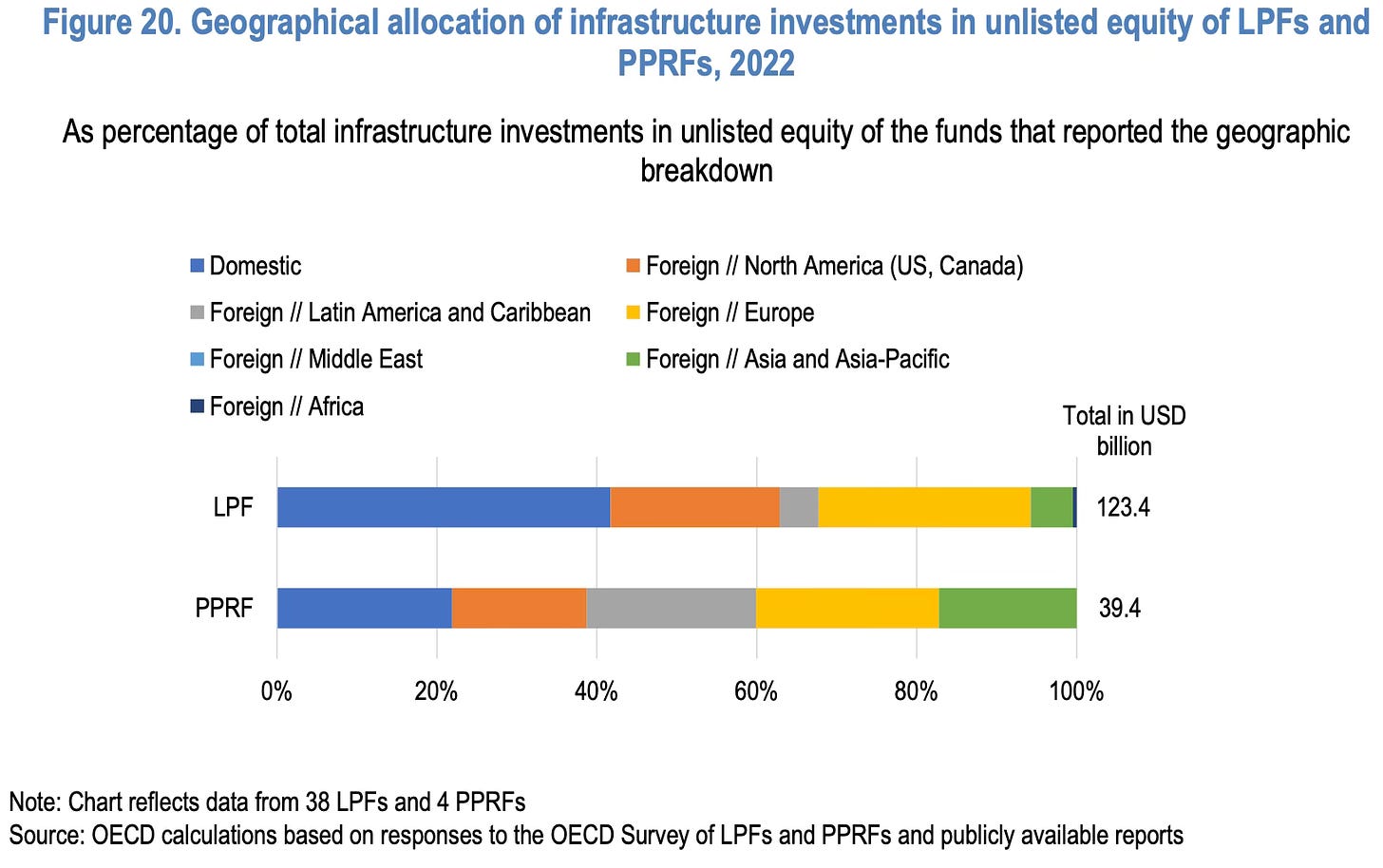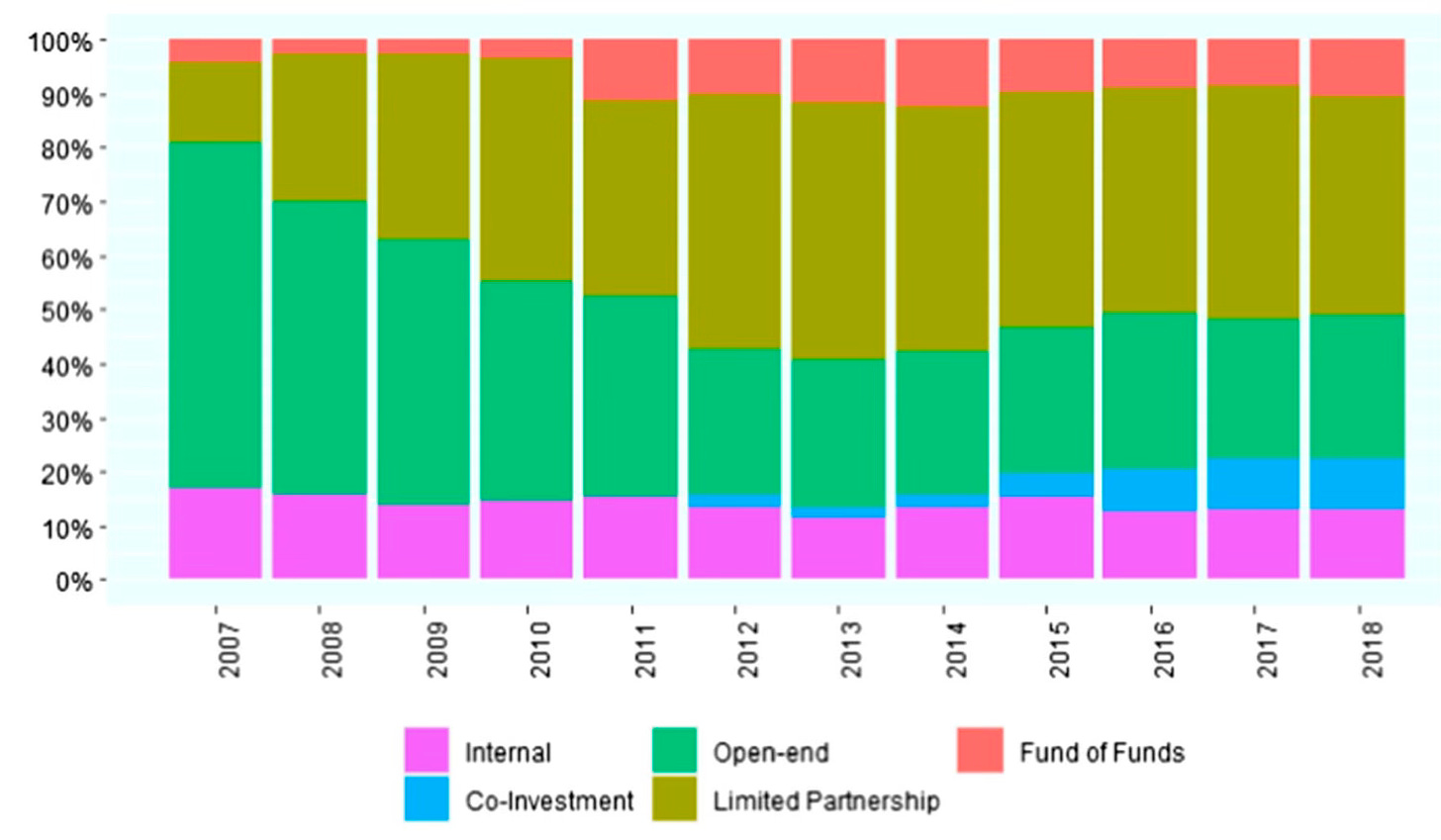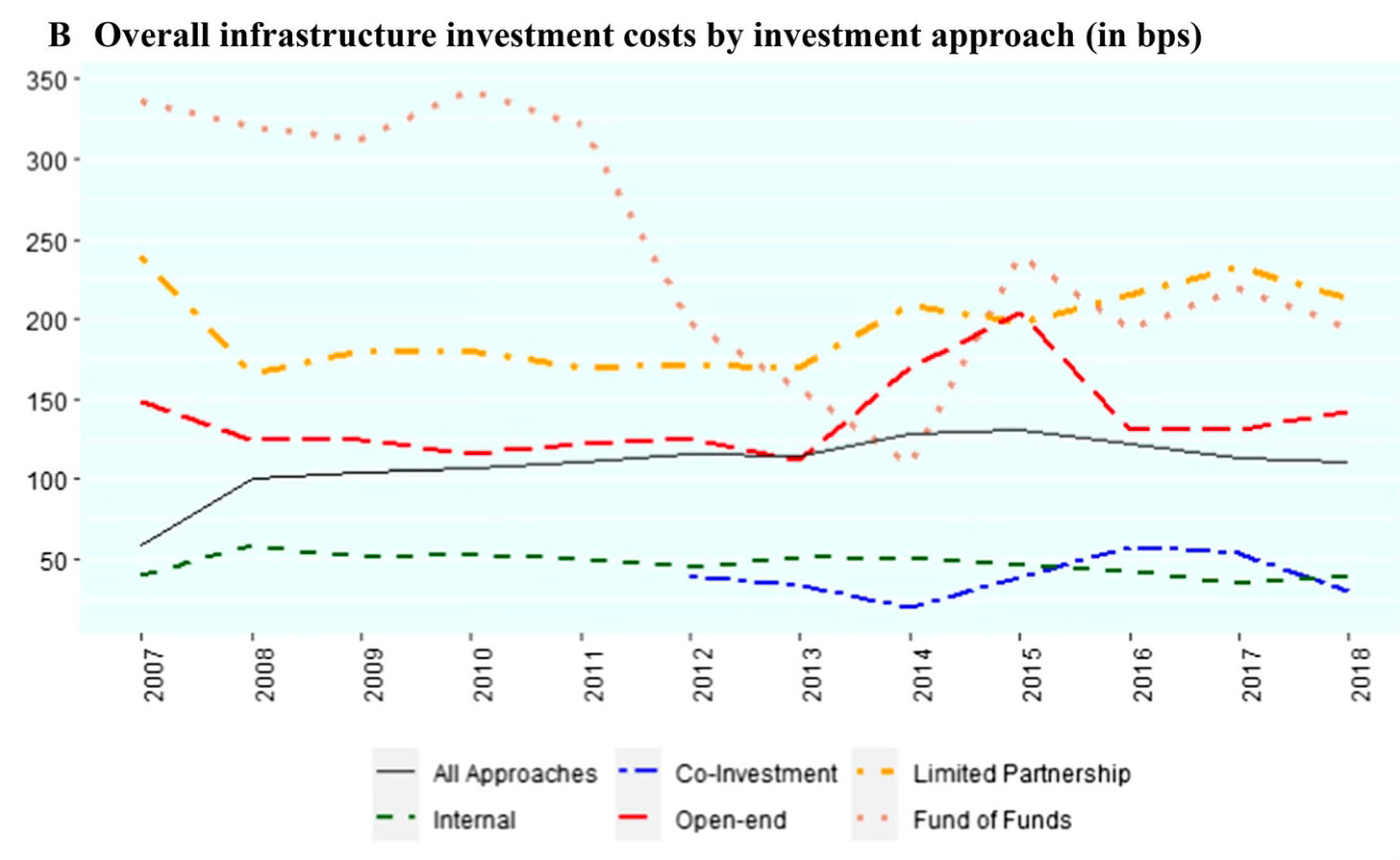This post will summarise a few recent papers.
1. Eyal Frank and Anant Sudarshan have a very good new paper that estimates the cost of the mass extinction of vultures in India caused by the introduction of veterinary medicine, diclofenac, that was passed to vultures via carcass. They use difference-in-difference strategy to compare districts with habitats highly suitable for vultures to those unsuitable, both before and after diclofenac use started.
They write about the critical role of vultures in the Indian context
Vultures have long provided critical environmental sanitation services by quickly dispatching of carcasses in India, which was home to over 500 million livestock animals in 2019, the most in the world. However, beginning in the second half of the 1990s, and over the course of just a few years, the number of Indian vultures in the wild fell by over 95% following the introduction of diclofenac. Once numbering in the tens of millions, this decline is the fastest of a bird species in recorded history, and the largest in magnitude since the extinction of the passenger pigeon in the United States. As vultures died out, the scavenging services they provided disappeared too, and carrion were left in the open for long periods, likely leading to an increase in the population of rats and feral dogs, in the incidence of rabies, and in the transmission of pathogens and diseases such as anthrax to other scavengers, as well as to increased water pollution from carcass dumping and surface runoff.
They quantified the health costs
Our results suggest the functional extinction of vultures—efficient scavengers who removed carcasses from the environment—increased human mortality by over 4% because of a large negative shock to sanitation. We quantify damages at $69.4 billion per year. These results suggest high returns to conserving keystone species such as vultures.
2. Jaedo Choi, Andrei A. Levchenko, Dimitrije Ruzic, and Younghun Shim use firm-level historical data over 1972-2011 from South Korea to study the impact of firm concentration on the economy (also here). During this period of spectacular economic growth firm concentration rose sharply.
This graphic captures the top 3 firms’ concentration ratio for four variables.
This measures the sales concentration (as a share of total manufacturing gross output) for the top 1, 5, and 10 manufacturing firms.
The share of the top 3 firms in each manufacturing sector in total manufacturing gross output increased from 10.1% to 28.5% between the 1970s and the 2010s.
Their findings fly against the conventional wisdom and economic orthodoxy that business concentration is detrimental to economic competitiveness.
To understand whether rising concentration contributed positively or negatively to South Korean real income, we build a quantitative heterogeneous firm small open economy model. Our framework accommodates a variety of potential causes and consequences of changing firm concentration: productivity, distortions, selection into exporting, scale economies, and oligopolistic and oligopsonistic market power in domestic goods and labor markets. The model is implemented directly on the firm-level data and inverted to recover the drivers of concentration. We find that most of the differential performance of the top firms is attributable to higher productivity growth rather than differential distortions…
The top-3 firms experienced substantially higher TFP growth over this period. While they were 2.6 times more productive than other firms in 1972, they were 10.9 times more productive in 2011. They also experienced a faster increase in foreign demand. By contrast, the top-3’s relative labor and capital distortions fluctuated widely over this period but exhibited no long-run trend. The decomposition of the change in concentration shows that about 57% of the total increase from 1972 to 2011 is accounted for by sectoral reallocation – sectors with larger firms growing faster than sectors with smaller firms. The remaining 43% is driven by within-sector increases in the top-3 firm shares. Of that, about half is due to the churning of the set of the top-3 firms, indicating quite a bit of dynamism at the top of the firm size distribution over this period…
We compare the observed baseline economy to an alternative in which the top-3 firms instead exhibited the average sectoral growth rates of productivity, distortions, and export market access. Had the top-3 firms not experienced differential shocks, the top-3 concentration ratio change would have been one-fifth of that in the data, but 2011 real GDP would have been 15% lower, and the net present value of welfare over 1972-2011 would have been 4% lower. Most of the total effect is due to the top-3 firms productivity. Without the differential productivity growth of the top-3 firms, 2011 real GDP would have been 13.7% lower, and the NPV of welfare would have been 2.8% lower… Had Samsung Electronics and Hyundai Motors’ shocks evolved at the same rate as the regular firms’, real 2011 GDP would have been 6.4% and 0.35% lower, and welfare 1.0% and 0.5% lower, respectively. Thus, even a single large firm can exert a noticeable influence on the aggregate long-run outcomes… For a large majority of top-3 firms, idiosyncratic shocks contributed positively to both concentration and real GDP, echoing the aggregate results that the top-3 firms were a positive force. It appears that in South Korea, most – though not all – top firms were indeed superstars rather than supervillains.
We should be careful in interpreting the findings of this study. It informs that the South Korean economy experienced increasing business concentration across industries and it benefited the economy by increasing output. It does not say anything about why this happened or the dynamics and incentives that led to this outcome, much less that business concentration is desirable and this finding can be generalised across countries.
In this context, it’s useful to revisit Joe Studwell’s description of the economic model pursued by North East Asian economies in their high-growth years. He writes that these countries pursued industrial policies that incentivised the development of manufacturing export capabilities and ensured global competitiveness by making companies compete with each other in exporting. The critical role of export competition is most often overlooked in the discussions on the East Asian economic miracle. The counterfactual on this is the South East Asian economies which too pursued similar industrial policies but without the disciplining force of export competition and ended up with vastly different and inferior outcomes.
So perhaps the lesson from South Korea is that contrary to economic orthodoxy, there’s nothing inherently bad about business concentration. Instead, it can benefit overall economic competitiveness, but only if other policy elements accompany it.
3. A working paper by Pinelopi K. Goldberg, Réka Juhász, Nathan J. Lane, Giulia Lo Forte, and Jeff Thurk examined industrial policy actions in the semiconductor industry. They contradict the conventional wisdom on the recent surge in the semiconductor industry as a deviation from the norm and instead find that governments have played a critical role in the growth of the industry. They argue that some subsidies (for new goods, green technologies, or sectors with inherent cross-border externalities) are beneficial and that while subsidies can appear to have limited immediate impact it can have significant long-term effects.
Our model-based approach involves specifying a model of the semiconductor industry, estimating key demand and cost parameters using firm- or industry-level data, and then using the model structure to back out marginal costs for each product. In this framework, production subsidies are identified as a residual factor that reduces the marginal cost of all firms in a country, i.e., a factor that leads to lower marginal costs in a country relative to a benchmark country after accounting for all other relevant cost determinants…
First, government support has been critical for the semiconductor industry’s growth, particularly during its initial development phase. This support is evident across all major segments of the value chain, benefiting established leaders at the technology frontier, such as Korea and Taiwan, countries seeking to advance their industry, such as China and the U.S., and countries attempting to enter the market, such as India… Second, subsidies are the primary form of government support, manifesting as financial grants, state aid, tax incentives, loans and loan guarantees, and equity injections… These policies primarily target production improvement and research, development and innovation. Third, China has been a prominent user of subsidies. However, our estimates do not pinpoint China as an outlier in its subsidy use; rather, its level of support is comparable to other countries, when considering the size of its market…
Fourth, cross-border technology transfer from more advanced to less advanced firms has been as crucial as state support for the industry’s development. This transfer has occurred through foreign direct investment (FDI), research collaborations, and technology licensing. Outside of the United States, our analysis found no instance where a domestic semiconductor industry developed without substantial foreign technology. This underscores the difficulty of developing the industry without foreign partners willing to share technology. It also explains why China has struggled to reach the technological frontier despite pursuing similar policies to other Asian economies that, as U.S. allies, had better access to foreign technology.
Fifth, policymakers aim to achieve several goals through their support of the semiconductor industry, including economic growth and development, international competitiveness, resilience, and national security. Implicit in these objectives is the belief in strong learning-by-doing effects in chip manufacturing, which lead to dynamic comparative advantage, economies of scale, and high industry concentration. In the presence of learning-by-doing, subsidies have a multiplier effect, amplifying and accelerating cost reductions as experience accumulates. Even when firms internalize the benefits of learning spillovers, so that private production is socially optimal, governments may still have valid reasons to support their domestic semiconductor industry. This support helps counter the natural tendency toward industry concentration, diversify the supply chain, and enhance its resilience. These objectives become even more critical when considering national security concerns, given that crucial segments of the semiconductor supply chain are concentrated in a few geopolitically critical countries. Learning spillovers across technologies and firms provides additional justification for subsidies.
Sixth… surprisingly, our model estimates suggest limited learning-by-doing at the firm-technology level—results which contrast with industry expectations and previous estimates… Importantly, however, our results indicate substantial within-firm spillovers across technologies, so that we estimate larger learning-by-doing at the firm level. Moreover, international spillovers across firms appear to be even larger… we hypothesize that they result from cross-country technology transfers and the close relationships between fabless firms and foundries, the latter of which may facilitate the global dissemination of knowledge. International spillovers imply potentially positive cross-border effects of subsidies. However, these effects depend on deliberate actions by market participants, meaning that firms in specific countries could be excluded.
Iteration is critical to increase yield efficiencies and competitiveness in the semiconductor chip manufacturing industry.
Semiconductor manufacturing includes several intricate steps, such as wafer fabrication, lithography, etching, and doping, each demanding precise control. Given the complexities and microscopic scale of these processes, mastering them requires more than just theoretical knowledge; it necessitates practical, hands-on experience. The fast-paced nature of the industry means that there is a large opportunity for continuous process improvement via the accumulation of knowledge through hands-on experience in manufacturing operations.
Learning by doing can show up in several areas. First, there is scope to optimize operational processes. Regular involvement in fabrication processes helps engineers and technicians identify process inefficiencies and subtle variations, which are often missed in theoretical training. This practical experience is vital for developing more efficient manufacturing techniques, enhancing yield rates and product quality. Second, semiconductor manufacturing firms promote a culture of innovation in which production floor personnel are expected to experiment with new ideas in real-time. This hands-on adaptability is crucial in an industry characterized by rapid technological changes and shifting market demands. Third, semiconductor firms are constantly re-evaluating and improving worker skills. The advanced skills required to manage and optimize cutting-edge semiconductor manufacturing equipment are best developed through on-the-job learning, enhancing the technical proficiency of the workforce.
Nobody does such iteration better than TSMC, which itself was established by the Taiwanese government in 1987. The paper has a graphic that gives fascinating insights about TSMC’s business strategy.
As the world’s leading semiconductor foundry, TSMC mastered the art of quick iteration across its advanced technology nodes, notably its 7-nanometer and 5-nanometer processes. From Figure we observe that TSMC operates several line-widths at a given time and that the company quickly ramps-up production followed by a long period of reduced sales as a percent of total TSMC revenue. TSMC’s approach involves close collaboration with equipment suppliers and customers to speed up problem-solving and process optimization, resulting in high yield rates and enabling faster commercialization of new technologies. This focus on continuous improvement through hands-on problem solving has enabled TSMC’s market dominance and attractiveness to global clients like Apple and NVIDIA.
The paper describes how countries have pursued industrial policy
Through the 1960s, the US military bought most integrated circuits produced (72% of all integrated circuits produced in 1965). This major source of demand allowed producers to learn how to commercialize and mass produce a technology that was still in its infancy… large-scale government procurement meant that public agencies played an outsized role in shaping how the industry developed. As one example, the U.S. Army, Navy, and Air Force funded distinct approaches to solving the technical problem of soldering together more transistors before silicon integrated circuits emerged as the best solution. Importantly, the US military required that contractors share technology, a policy that promoted the flow of knowledge. This, together with rigorous antitrust policies pursued in the postwar period, allowed for the rapid dissemination of technology…
In those economies where the technology gap was large, the state played a dominant and sometimes leading role in establishing the industry… Crucially, beyond making the industry more attractive to entrepreneurs by changing relative prices (through tariffs, subsidized loans, tax breaks etc.), each (East Asian) state was directly involved in the process of international technology acquisition, absorption, and diffusion. Put differently, developing a domestic industry seems to have required some infant industry promotion and, critically, also extensive international technology transfer facilitated by public agencies…
As Japanese firms began entering semiconductors in the 1950s, MITI determined which firms received a technology license and, once approved, the government guaranteed that payments would be made… by coordinating technology licensing directly, the government pooled knowledge and lent the credibility of the Japanese government to firms that were unknown to the West… In Korea… beyond the usual incentive package for prioritized sectors, the government established an industrial estate for the production of semiconductors and computers, it protected the domestic market, and, most famously, it established the Electronics and Telecommunication Research Institute (ETRI)… ETRI… coordinated R&D efforts between public researchers and the private sector… the government accounted for the vast majority of the R&D spending in semiconductor technology through the 1980s, with private firms contributing a smaller share… through ETRI, the state pushed the chaebol, large conglomerates, to upgrade their production and move into more design-intensive, higher-return markets. In some cases, it did so by subsidizing and coordinating efforts by the private sector; in others, it undertook the basic research itself, working closely with the private sector…
The Ministry of Communications (MOC) decided to develop indigenous switching technology, a hugely risky proposition that private firms would not have been willing to undertake on their own. The MOC however used its control of telecommunications public procurement to persuade foreign firms supplying the Korean market such as Ericsson to transfer some of their switching technology (a form of quid pro quo), and train ETRI personnel. ETRI then used this knowledge, as well as generous funding from the MOC, to design an electronic switching system that was better suited to developing country contexts with large rural populations… each of the three chaebol involved in semiconductors (Samsung, Goldstar and Hyundai) had multiple technology alliances for a variety of products with foreign firms (the authors list twenty-two distinct alliances for three years between 1983-1985). Moreover, each acquired US based firms “providing them with direct access to highly qualified scientists and engineers, advanced technologies and major markets”…
InTaiwan… through the newly founded Electronics Industry Research Center (reorganized later as Electronics Research and Service Organization, ESRO) the government set up a public pilot plant that developed technologies increasingly close to the frontier (in cooperation with RCA, a US-based firm). In this way, the government assumed the entirety of the risk of high-tech R&D. Over time, ESRO moved into all areas of the supply chain including computer- aided design (CAD) and IC mask making. Later, in the 1980s, it closed the technology gap further by moving into Very Large Scale Integration Technology (VLSI)... In the second stage, the government transferred the technology it had developed at ESRO to the private sector through licensing, spin-offs and technology diffusion policies. In the third stage, the government provided a variety of incentives to encourage the private sector to enter the industry. Like Korea, the government set up an industrial park and also offered a large range of generous fiscal incentives (cheap loans, tax breaks, accelerated depreciation of R&D equipment and low-cost land).
Some other interesting snippets
Today, fabless firms account for roughly 90% of all semiconductor firms and generate one-third of industry revenue… Taiwan accounts for approximately 59% of all outsourced wafers produced… U.S. foundries account for four percent of all third-party wafers produced.
4. In another paper, Réka Juhász and Nathan J. Lane examined the practical challenges (read the political economy) with the right policy choice and effective implementation of industrial policy. They discuss the political and capacity constraints associated with the pursuit of industrial policy.
First, our framework implies that industrial policy should consider the realities imposed by the political world. A policy incongruent with these constraints is prone to government failure… In our view, government failure is not a necessary feature of industrial policy. Rather, it is endogenous and likely to emerge when industrial policies are chosen beyond a country’s political and capacity constraints. An implication is that we should be wary of unconditionally mimicking the precise policies pursued elsewhere… Successful industrial policies are ones that work within their political environment, and these particulars may vary.
Second, a political economy of industrial policy also reveals that the political challenges facing policymakers are not unique to industrial policy. We discuss how time inconsistency and political credibility may plague infant industry policy, yet they also plague much of monetary and fiscal policy, too… In some cases, the political constraints posed by second-best industrial policy are, in fact, not as steep as those faced by first-best policies… Third, working within the current political environment doesn’t mean governance constraints are immutable. On the contrary, many thoughtful industrial policies are designed with an eye to relaxing constraints. Our case study of climate policy illustrates that green industrial policy may, in fact, help relax the political constraints to future carbon pricing policies.
Specifically, they write about the critical importance of investments in state capability to effectively pursue industrial policies.
We argue that virtually every successful policy episode has involved substantial new investments in state capacity… South Korea and other postwar economies continually invested in bureaucratic capacity. Under General Park Chung Hee in South Korea, “[t]he developmental state was not a given, but a human artifact”, one cultivated by continual investment and political choices… Industrial policies themselves can be particularly capacity-intensive to administer; they often require deep knowledge of the markets and firms they interact with, regular data, technical expertise, and more… Bureaucratic autonomy, in particular, has been an essential feature of bureaucratic capacity in the world of industrial policy… Given the political temptations surrounding industrial policies, the autonomy bureaucracies have over policy has been vital for successful industrial policy… the pilot development agencies in East Asia evolved to have elite selection criteria, meritocratic promotion, and long, stable career paths. Bodies were thus staffed by highly trained civil servants and enabled longer-run policymaking.
Emerging evidence in economics on bureaucracies shows how… depoliticizing bureaucratic selection can improve performance… Because industrial policies are complex, skill-intensive, and require careful consideration of appropriate instruments, there may be a case for delegating details of policy formulation to higher-capacity bodies. In postwar Japan, the pilot industrial policy agency, the Ministry of International Trade and Industry (MITI), practiced what Chalmers Johnson famously called “administrative guidance,” de facto power in shaping (and not simply implementing) the industrial policy of the 1950s and 1960s, which Johnson saw as consequential to policy success… When capacity-intensive industrial policies are lobbed onto the growing portfolio of bureaucracies, the problem is compounded…
Implementing industrial policy not only requires a high-quality bureaucracy, but one that continually interacts, negotiates, and exchanges information with industry and stakeholders more broadly. Industrial policy… is informed by and executed through continual interactions with market participants… It matters how connected or “embedded” bureaucracies are with the private sector… At its height, East Asian industrial policy was marked by webs of collaboration between bureaucratic agencies and the private sector… From South Korea’s monthly export promotion meetings to Japan’s use of deliberation councils, East Asian states purposefully cultivated embeddedness by institutionalizing interactions between firms and bureaucracy… Peru’s Mesas Ejecutivas (known as mesas or ME)… established in 2015, are regular, weekly private-public working groups dedicated to solving sector- specific policy… mesas helps identify market and coordination failures and, importantly, can triage and expedite solutions across bureaucracies. Bodies like mesas are notable in that they have a low fiscal footprint and, in fact, were an alternative to costly external consultations…
Embedded agencies were instrumental to Ireland, Israel, and Taiwan entering dynamic IT markets, yet did so with wide institutional variation. Where the Taiwanese state was directly involved in the industrial R&D process (e.g., Industrial Technology Research Institution), Irish agencies took a more advisory and advocacy role (e.g., National Software Directorate)… embeddedness facilitates the flow of information between bureaucracy and industry. Doing so is essential given fundamental informational asymmetries between bureaucrats (principals) and the firms they interact with (agents)… Peter Evans famously called “embedded autonomy”, where both are required for industrial policy to succeed. Autonomy without embeddedness risks flying blind and constructing and deploying industrial policy in isolation from essential stakeholders. Embeddedness without autonomy risks incoherence and policies guided by private interests…
Thailand’s military-dominated governments pursued an inchoate form of import substitution industrialization (ISI)… Thailand pursued a contradictory mix of export promotion and ISI, or a type of “export-oriented protectionism”. South Korean export policies allowed de facto import liberalization for exporters. Thai policy did not; although exporters were given rebates from protectionist policy, they were insufficient and mismanaged. Where South Korean export policy allowed access to critical machinery and intermediate imports for export production, Thailand protected these goods without adequate relief for exporters, and even raised protection for capital goods through the decade… Where South Korea developed systems for scrutinizing export incentives in the 1960s, Thailand’s 1970 export strategy lacked such capacity, and poor administration created bottlenecks for producers… Thai political constraints made devaluation improbable, unlike postwar Taiwan and South Korea, whose politics allowed—or even compelled—them to pursue politically difficult devaluations before export promotion… Only in the 1980s did a coherent export-promotion policy emerge, promulgated by a new regime that seized upon a window of opportunity.
State capability weakness is an important reason for India’s struggles with the pursuit of industrial policy.
